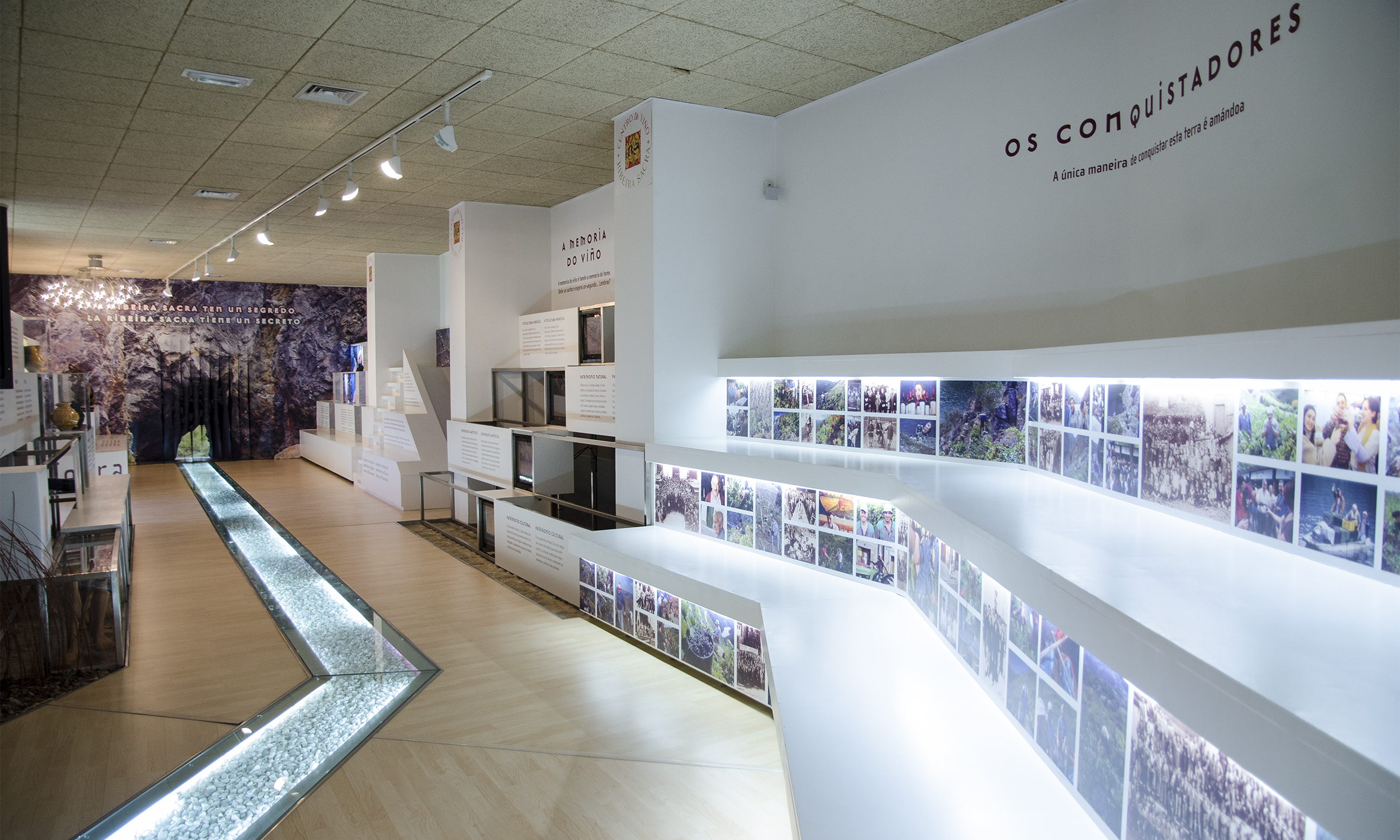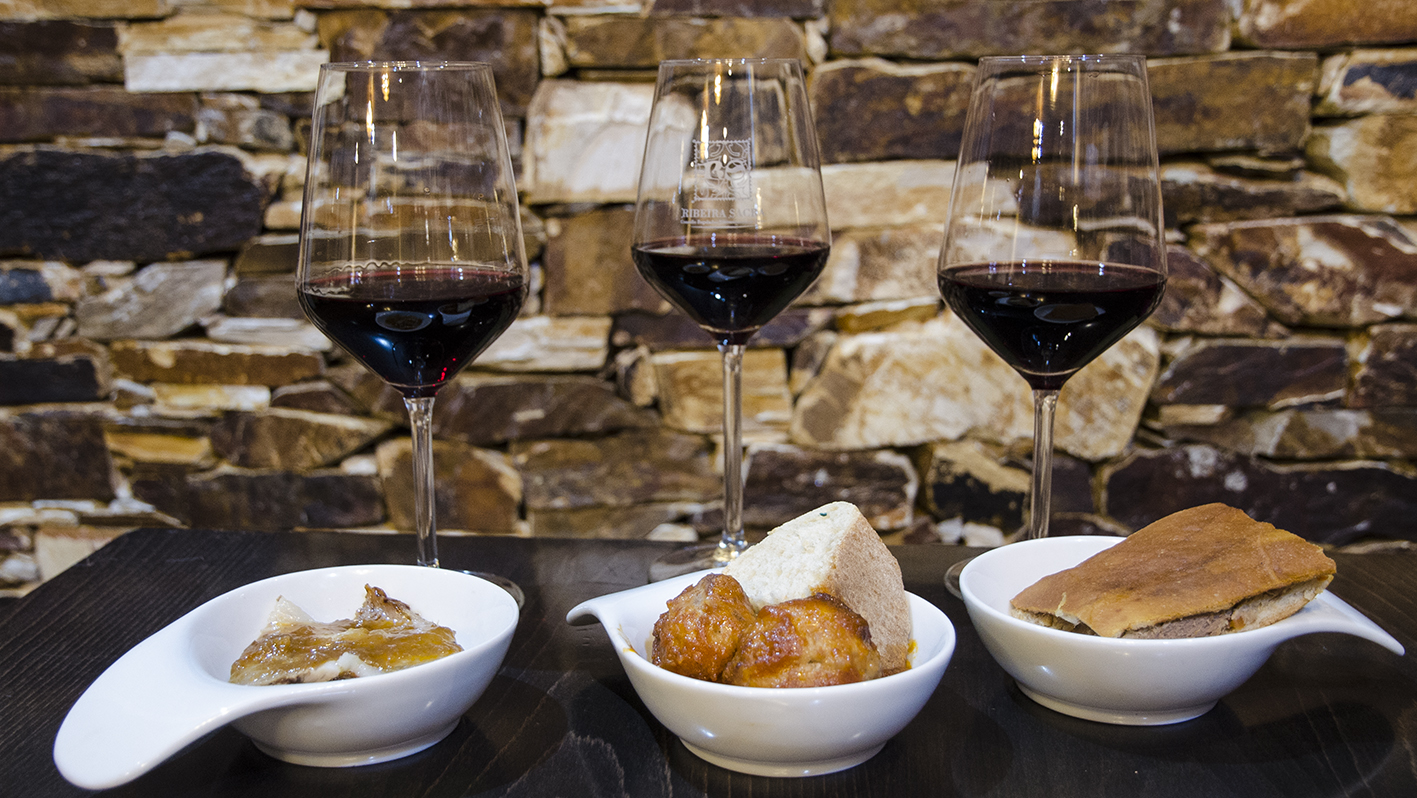Situated in northern Spain, the autonomous community of Galicia, with its Atlantic coastline, is a green and lush land of mountains, forests and rivers. This landscape, along with the climate, the Gallego language and the strong local culture all help make Galicia distinctly different from the rest of Spain. Deep in the heart of rural Galicia, where the rivers Sil and Miño meet, is the area of the Ribeira Sacra, a land of stunning natural beauty where the ancient woods and small villages remain steeped in legends and myths.
Introduced by the Romans and developed in medieval times by the many local monasteries (whose presence gave the area the name Ribeira Sacra or Sacred River) the vines of the Ribeira Sacra still grow on traditional stone terraces that cling to the almost vertical hillsides of deep river canyons.
The Ribeira Sacra produces wines (red wine made from Mencia grapes and white wine from Godello grapes) that are highly individual. Reflecting the terroir of this rather special and some what secret place they are fast becoming internationally recognised. At the gateway to the Ribeira Sacra is Monforte de Lemos, a small town overlooked by a hill top monastery, now a stylish hotel, one of Spain´s famous Paradors. Situated in the town’s historic centre and housed in a renovated building dating from 1752 the wine centre has been created as the hub for all the associated wine activities of the area.
For more information, visit our website http://centrovino-ribeirasacra.com
The exhibition
Most of the top floor is taken up with a permanent and innovative exhibition that explores the many aspects of the culture of wine. Using videos, photographs, sounds, smells, tastes and touch the exhibition explains how such a difficult and challenging landscape can produce such wonderful wines and just why the people who live and work in the Ribeira Sacra are so passionate. The natural elements of earth, water, sun and fog as well as the steep stone terraces that climb stair like up the river valleys are explored to show the roles they play in the development of the Ribeira Sacra wine.
Aspects of the cultural traditions of the area, the natural beauty, the history of both wine in general and in the Ribeira Sacra, arts and crafts, recorded interviews with wine producers and workers are also offered. Guided tours of the exhibition are offered and are available in English if advance notice is given.

The Wine Center Shop
The one stop destination for all your wine needs. From glasses to corkscrews, from decanters to bottle carriers and of course wine. This is the place to find gifts and presents for family and friends, to buy your weekday wines and wine for that special occasion.
We have the largest selection of Ribeira Sacra wines to be found anywhere in the world, as well as liquors, typical and handcrafted products of the area and an "Ecologic Corner". This is not just a place to buy wine but also a place to learn and discover more about the world of wine and of course there is always a member of our professional staff on hand to advise and guide you.
The tapas Wine Shop
A non smoking Taparia with warm soft lighting, music playing quietly in the background and no television or gaming machines. Modern and stylish this is the perfect place to relax in comfort whilst enjoying one of the many Ribeira Sacra wines on offer.
Open all day every day the Taparia’s menu will change by season allowing the freshest Galician produce to be used. A daily menu and degustacion menus are also available.

C.R.D.O.R.S.
The Regulatory Council of Ribeira Sacra has three basic duties:
- To guarantee the origin of the wine.
- To assure the quality of the product.
- To promote the wines produced under the umbrella of the Denomination of Origin or DO.
To ensure and maintain the quality of the wine being bottled and sold with the DO stamp of approval all wines are checked and tasted. Qualified personnel of the Council and an independent technical commission are put in charge of the controls that ensure the final product meets the standards previously set by the Council relating to the wine. In the year 1993 the regulations for Viños da Terra were approved, and in 1996 came the final approval of the D.O. One of the main issues facing the Regulatory Council today is to develop the professionalism of the management of the various wineries in order for them to compete successfully in the national and international market place.
More information can be found at the Regulatory Council’s web site www.ribeirasacra.org
